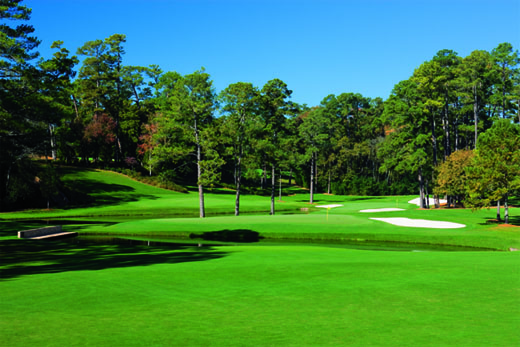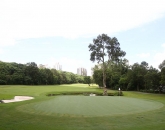 What do you think you’d shoot around Augusta National if given the chance to play? It’s a question we’ve all asked ourselves or the other members of our regular fourball—typically after a wee tipple in the clubhouse post-round. It’s only natural of course: as golf fans, having watched hundreds of hours of Masters coverage over the years, we recognize the holes as easily as those on our home course.
What do you think you’d shoot around Augusta National if given the chance to play? It’s a question we’ve all asked ourselves or the other members of our regular fourball—typically after a wee tipple in the clubhouse post-round. It’s only natural of course: as golf fans, having watched hundreds of hours of Masters coverage over the years, we recognize the holes as easily as those on our home course.
For instance, we know that on 16 we should stay away from the water and target the right centre of the green because the strong contours of the putting surface will feed the ball back down toward that Sunday pin-placement. We know that a raking draw off the tee at the par-5 13th will give us an extra 20 yards of roll, allowing us a better chance of getting home in two. And we all know that it doesn’t matter what club we hit on the par-3 12th, it’s up to the golfing gods to decide whether our ball clears Rae’s Creek or not. It’s just a shame that so few of us will ever get the experience it at first hand.
Augusta National was designed by Alister Mackenzie, with help from Bobby Jones, the amateur legend and both men believed that the course should be demanding for the professional player yet not intimidating to the recreational golfer. Jones once said that one of the great strengths of the course was that while pros were always in danger of succumbing to disaster, average members and their guests might well shoot some of their best rounds ever—that a seasoned 18-handicapper, for example, might have a good day and shoot 85.
Like all courses, Augusta has changed since it first opened in 1933. Holes have been reconfigured (most notably at the aforementioned 16th, which used to be an easy 145-yard hole fronted by an inconspicuous ditch), the greens have been re-turfed with ultra-fast and silky bentgrass and, in recent times, significant length has been added. The dogleg right 18th was the recipient of a lot of it—in 2002, the tee was moved back a staggering 60-yards.
But despite all this, scoring among Augusta’s members—regular golfers like us—hasn’t varied as wildly as you might imagine. Members and their guests are allowed to play the course until the Sunday before the tournament starts, and their scores at that time, it has been reported, seldom differ very much from their scores during the rest of the season. The reason for the paradox is the kind of trouble that tends to defeat the average player is less severely penalized at Augusa National than it is on other demanding courses. The fairways are generous, the trees are widely spaced, the bunkers are few, out-of-bounds is seldom a danger, and the short rough—or “second cut”, as the club refers to it as—is, for an average player, more of a comfort than a catastrophe, since it can cause a ball to sit up a little higher than it would on a closely mown fairway. The greens are difficult, of course—but all greens are difficult for an average player. For a 20-handicapper, three-putting is a regular occurrence on any course, and the particular perils of Augusta National's putting surfaces are offset by the reduced likelihood of losing a ball off the tee or hitting into an unplayable lie.
So what would you shoot around Augusta? A pretty decent number, in all probability.
Click here to see the published article.











